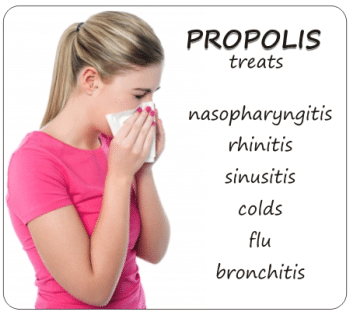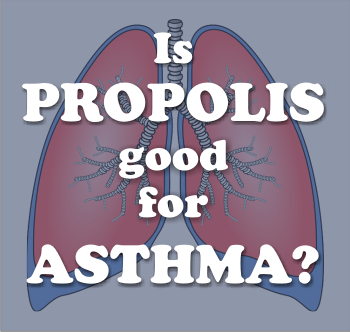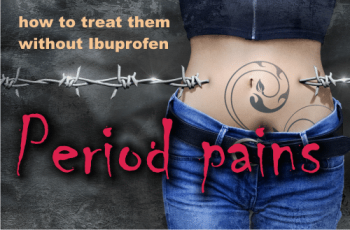Everybody has wandered how to treat tonsillitis naturally. Generally after trying OTC drugs. Or how to treat sinusitis naturally. Or rhinofaringitis and bronchitis. One powerful option to all of these is PROPOLIS.
Otorhinolaryngologic and respiration diseases (ear, nose, throat, lungs) are our neverending problems. Many scientists and therapists have studied the effects of propolis in these fields. Probably the most important studies were carried by: Marcucci, Asavova, Shkenderov-Ivanov, Tichonov, Crisan.
- According to their studies, propolis treated the following diseases:
· Chronic and acute inflammation of the inner ear;
· Common acute cold, acute and chronic inflammation of the upper respiration path;
· Synositis;
· Laryngitis (larynx inflammation);
· Tonisillitis (infections of the tonsils);
· Pulmonary tuberculosis (sometimes in combination with antibiobics or other anti-tuberculosis measures)
· Bronchial asthma
A few studies:

• A total of 260 steel workers suffering from bronchitis were treated for 24 days by various methods including local and systemic regulation of the immune system and local treatment with an ethanolic extract of propolis (EEP) in a physiological salt solution. The best results were obtained in patients treated with EEP inhalations.
• Crisan et al. made a study using an aqueous propolis extract (Nivcrisol) for the chronic inflammatory diseases of the upper airways in preschool and school children, during the cold season of 1994-1995. There were beneficial results: decreased numbers of acute and chronic symptoms and a decrease or suppression of viral-microbial flora in upper airways. The authors of the study concluded that the propolis extract was a good adjuvant medication for the treatment of acute and chronic rhino-pharyngeal diseases. The preparation was well tolerated and economical.
• The ear infection caused by the fungus Aspergillus, usually triggered by a low immunity of the body, was treated with 30% propolis tincture, as follows: One teaspoon of tincture and 10 ml saline water are mixed in a small bottle, whichis than capped and immersed in warm water for a few minutes, till it reaches the temperature of the body.
The mixture is vigorously shaken and using a pipette, 10 drops are put in each ear, every day just before bedtime, to act overnight. A peace of gauze is placed in the ear, to prevent leaking out. The treatment was taken 10 days. The following 10 days a different treatment was taken: 1 teaspoon of propolis tincture mixed with 1 teaspoon of olive oil, warmed at body temperature, 3 drops in every ear, 3 times per day.
Immunity was also increased with a raw diet and more sleeping hours.
• 142 patients have participated in a study with propolis. They were divided in 2 groups: Group A – 104 patients (80 adults and 21 children) with nasopharyngitis and Group B – 50 patients (17 adults and 21 children) with rhinosinusitis.
In Group A, 217 patients showed associated conditions (sequelae of otitis, Tubotympanic catarrh, glossitis) as well as chronic asthmatic bronchitis, emphysema, pharyngeal paraesthesia, nervous asthenia, neuro-endocrine disorders.
Group B had an infectious base, allergic or associated (otitis, adenoids, pharyngolaryngeal tonsillitis, tracheobronchial, septum deviation).

Local treatment was conducted with propolis, in form of instillations with Propliant* (oily solution of propolis), Proporinol ointment and aerosols with Proporal proportion (lyophilized propolis). The treatment was taken 2 or 3 times per day for 1 month. Other products of the hive have been administered, in order to boost the immune system (propolis tincture, propolis syrup, honey etc).
The inflammation of tracheo-bronchial mucosa and pharyngolaryngeal mucosa was treated with Proposept (capsules of propolis), by throat coating with with a mixture of propolis and royal jelly in honey, and with aerosols with Proposept or ORL-1.
The results have been favorable, with great improvements from the first days. There were:
– 72% patients had very good results
– 25% patients had medium results
– 3% patients reported stationary effects.
How should we take propolis for ORL and respiratory problems?
The studies already made on humans, recommend the following applications forms, for the otorhinolaryngologic (ear, nose, throat) treatments:
· Aerosol inhalation combined with EEP (ethanolic extract of propolis) intake for: common acute cold, acute and chronic inflammation of the upper respiration path, synositis, bronchial asthma:
· Tampons and washing with propolis extracts for the inflammation of the inner ear:
· Aerosol inhalation, application of propolis ointments for tonsilitis:
Application forms:
· Propolis inhalation 3 to 5 times a day
· Drops (10-15 drops of 20 % propolis, 3 times a day)
· Tablets: 4-6 times daily of tablets containing 50 mg propolis
· Cream and ointments containing 5-10 % propolis
for children: half dose.
NOTE:
The best way of absorbing propolis extract (drops) is to combine it with honey, in a 1:3 ratio. One teaspoon of propolis to 3 teaspoons of honey.
Folk medicine recommends:
· To combat influenza and respiratory infections and throat: 40 drops in 200 ml warm water, twice a day. Or dissolved in honey.
· Pulmonary tuberculosis is treated with 30 drops three times a day. Also inhalations are done twice a week, with 100 drops of propolis tincture in one liter of hot water.
The immunity system plays a very important factor for all types of otorhinolaryngologic and respiratory diseases. All products of the hive have proven immuno-stimulating properties, and they represent an important adjuvant in boosting our self defense system.
*All the medicines used in the study are prepared by Apifarm, Romania, and cannot be found for online selling.
==============
==============
References:
The Propolis Book, Chapter 2, Bee Product Science, February 2014;
“The Health Professional’s Guide to Dietary Supplements” By Shawn M. Talbott, Kerry Hughes;
esanatos.com
“Girls sneezing” picture credit stockimages via freedigitalphotos.net




